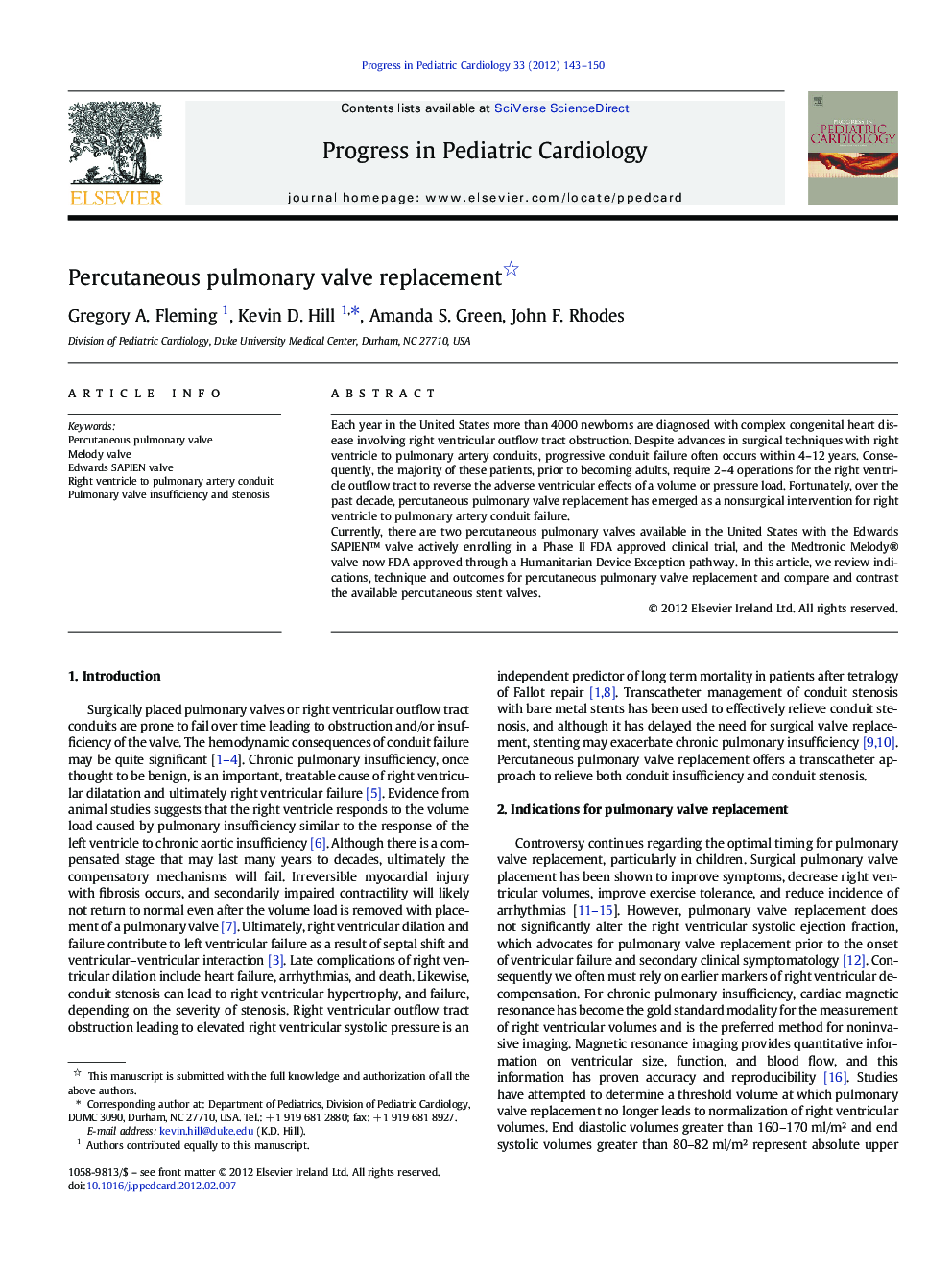| Article ID | Journal | Published Year | Pages | File Type |
|---|---|---|---|---|
| 3007514 | Progress in Pediatric Cardiology | 2012 | 8 Pages |
Each year in the United States more than 4000 newborns are diagnosed with complex congenital heart disease involving right ventricular outflow tract obstruction. Despite advances in surgical techniques with right ventricle to pulmonary artery conduits, progressive conduit failure often occurs within 4–12 years. Consequently, the majority of these patients, prior to becoming adults, require 2–4 operations for the right ventricle outflow tract to reverse the adverse ventricular effects of a volume or pressure load. Fortunately, over the past decade, percutaneous pulmonary valve replacement has emerged as a nonsurgical intervention for right ventricle to pulmonary artery conduit failure.Currently, there are two percutaneous pulmonary valves available in the United States with the Edwards SAPIEN™ valve actively enrolling in a Phase II FDA approved clinical trial, and the Medtronic Melody® valve now FDA approved through a Humanitarian Device Exception pathway. In this article, we review indications, technique and outcomes for percutaneous pulmonary valve replacement and compare and contrast the available percutaneous stent valves.
